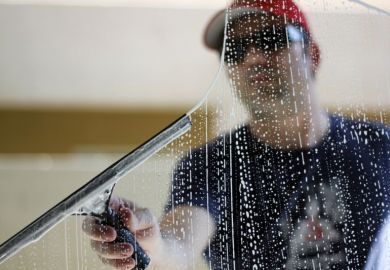To say that David Rodowick's essay is a continuation in print of confessions and polemics that have been taking place for nearly a decade wherever film and media scholars gather is not intended as a criticism. Indeed, this sense of familiarity will probably afford his book, along with its promised companion, An Elegy for Theory, a central position in debates about film's future in a digital era.
Like many whose personal lives and academic careers have been closely linked to the cinema-going experience, Rodowick laments the passing of this experience in its analogue form and wants to go on professing allegiance to "film". He knows, of course, that the issue has never been clear-cut: that from the late 1980s video began to offer a parallel experience of cinema and its history, while digital processing of sound and image played an ever-increasing role in mainstream film production, even if the "cinema experience" was preserved.
As a theorist with a philosophical bent, Rodowick wants to keep in play the semiotic apparatus of Christian Metz and the neo-Bergsonism of Gilles Deleuze, as well as the more pragmatic aesthetics of Nelson Goodman and Stanley Cavell. Most revealing is his engagement with Noel Carroll's arguments against "medium specificity", questioning whether there are irreducible defining criteria for the medium "film". Rodowick finds Carroll's arguments persuasive, yet remains dissatisfied, speaking of "insensitivity" and of throwing the baby out with the bathwater.
What emerges from The Virtual Life of Film is in fact nostalgia, even though Rodowick is enough of a historian to know that cinema was always a hybrid enterprise, subject to constant technological and economic change. Yet he persists in worrying away at the issue of an art form's "medium", in terminology that harks back to traditional fine art aesthetics, and seems to believe in the equilibrium state of cinema beloved of French theorists and their followers - a state he believes is finally under threat from digital dispersal.
Where Rodowick's unusual combination of interests pays rich dividends is in his detailed analysis of Alexander Sokurov's epic tour of the Hermitage Museum, Russian Ark, conducted in a single digital "shot". Whereas many have annexed this to the history of long takes in analogue cinema, Rodowick insists on considering it not a film but a digital artwork and emphasises how much it depends on "compositing" the raw image capture, making it in effect a work of montage. Here, as elsewhere, there is much to stimulate, provoke and argue within a book that successfully taps into the scholarly Zeitgeist.
The Virtual Life of Film
By D. N. Rodowick.
Harvard University Press
216pp
£35.95 and £16.95.
ISBN 9780674026681 and 26988.
Published 12 October 2007.




